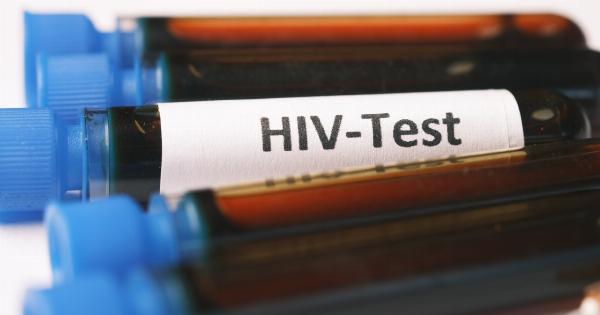A shocking announcement has sent shockwaves through the medical community as a once-cured child, who was believed to be free of the deadly HIV virus, has recently tested positive.
This revelation has not only stunned doctors and researchers but has also raised serious concerns about the effectiveness of current treatment methods and the potential for unexpected relapses in this relentless virus.
A Gleam of Hope Shattered
In 2007, the case of an infant born with HIV in Mississippi made headlines worldwide. The child was born to a mother who was herself unaware of her HIV-positive status.
Disturbingly, the baby was not diagnosed until more than 30 hours after birth, which significantly increased the risk of transmission.
Upon receiving the diagnosis, medical specialists at the University of Mississippi Medical Center immediately initiated aggressive antiretroviral therapy (ART) on the newborn.
These medications, a combination of potent drugs, aimed to suppress the virus and prevent it from causing further damage to the child’s immune system.
What followed next was nothing short of a medical miracle. After consistently receiving ART treatment for 18 months, the virus became undetectable in the child’s blood, leading doctors to formally declare the child functionally cured.
News of this miraculous recovery spread far and wide, providing hope to countless individuals living with HIV across the globe.
The Devastating Downfall
Fast-forward to the present day when latest test results revealed the unimaginable – the once-cured child is now back with a positive HIV diagnosis.
The virus’s reappearance leaves specialists grappling with a myriad of questions and concerns about the complex nature of HIV and its ability to lie dormant within the body.
Dr.
Deborah Persaud from the Johns Hopkins Children’s Center, who worked on the original groundbreaking case, expressed her deep disappointment upon learning about the new diagnosis but emphasized the importance of continuing research efforts in the field of HIV and AIDS.
Dr. Persaud remarked, “While this outcome is undoubtedly disheartening, we must recognize that it offers us an opportunity to delve deeper into understanding the mechanisms by which HIV rebounds after seemingly successful treatment.
We can use this knowledge to develop more effective strategies to combat the virus in the future.”.
Challenges Faced in Combating HIV
The recent setback highlights the persisting challenges faced by researchers and healthcare providers in their fight against HIV.
Despite the significant achievements made in antiretroviral therapies, finding a cure for the virus remains an elusive goal.
One of the primary hurdles is the ability of HIV to integrate its genetic material into the host’s cellular DNA. This characteristic allows the virus to remain hidden and evade the immune system effectively.
During treatment, antiretroviral drugs target actively replicating viral particles, but they fail to reach the dormant virus within the host’s DNA.
Additionally, the virus shows a remarkable ability to mutate rapidly, making it challenging to develop drugs that can effectively target all strains of HIV.
This constant evolution of the virus necessitates continuous modifications and improvements in existing treatment regimens.
The Role of Drug Adherence
Another crucial factor contributing to the resurgence of the virus is suboptimal drug adherence by patients. The effectiveness of antiretroviral therapy heavily relies on patients correctly following the prescribed medication regimen.
Failure to adhere to the strict dosing schedule and the required duration of treatment can give the virus an opportunity to rebound.
In the case of the formerly cured child, it is unclear whether non-adherence played a role in the reappearance of the virus.
Medical professionals are examining the circumstances surrounding the case to determine possible causes and inform future treatment strategies.
Hope on the Horizon: Current Research and Future Directions
While the return of the virus in a previously cured individual is undoubtedly a setback, it is important to note that significant progress has been made in the realm of HIV research.
Scientists across the globe continue to explore various approaches to combating the virus, from gene therapies to immunotherapies.
Recent breakthroughs, such as the development of long-acting antiretroviral drugs and the use of powerful antibodies, have raised hopes for better treatment outcomes and even a potential cure.
Additionally, ongoing efforts to develop an HIV vaccine may hold the key to preventing new infections and reducing the burden of the disease on a global scale.
Researchers are investigating novel vaccine strategies, including mosaic vaccines and broadly neutralizing antibodies, which have shown promising results in preclinical and early-stage clinical trials.
Surmounting the Stigma
While advancements in medical research and treatment are vital, it is equally important to address the social stigma surrounding HIV and AIDS.
The stigma associated with the virus perpetuates discrimination and often prevents individuals from seeking testing, treatment, and support.
Education and awareness campaigns play a significant role in dispelling myths, challenging stereotypes, and promoting inclusion.
By fostering an environment of empathy and understanding, we can ensure that those living with HIV receive the care and support they deserve.
An Urgent Call to Action
The recent case of the formerly cured child serves as a stark reminder that the battle against HIV and AIDS is far from over.
It is an urgent call to action for researchers, policymakers, and healthcare providers to double their efforts in combating the virus and working towards a cure.
Moreover, this development reinforces the need for enhanced funding for research and the delivery of quality healthcare services to all individuals affected by HIV.
By investing in research, prevention programs, and accessible treatment options, we can strive to create a future free from the burden of HIV and offer hope to the countless lives impacted by this relentless virus.



























